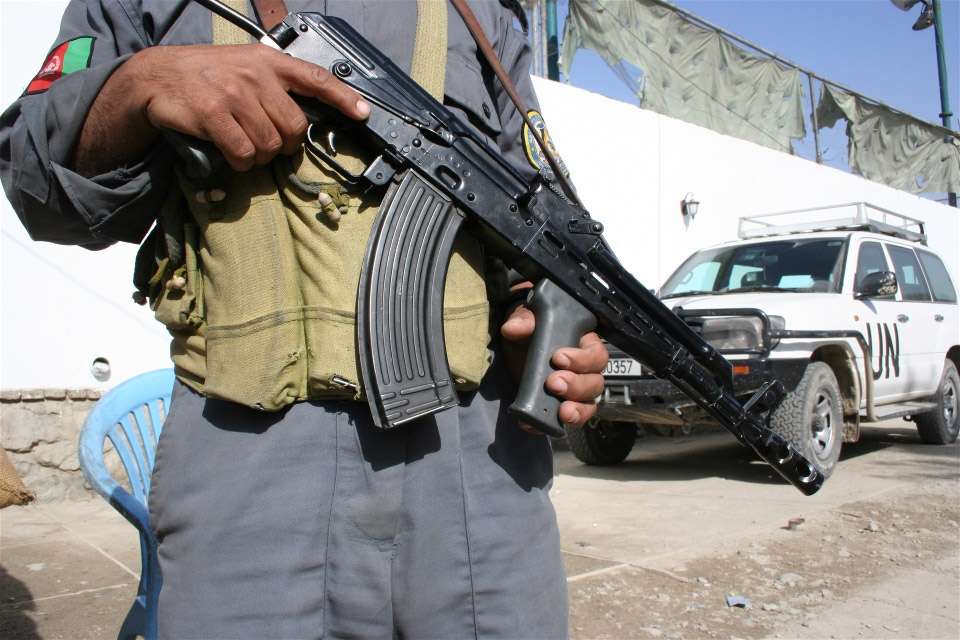Another Bloody Weekend In Afghanistan
Violence in Afghanistan

NEW DELHI: It was another bloody weekend in Afghanistan, as at least 12 people were killed and 66 others wounded in a suicide attack in the capital city of Kabul.
A suicide bomber blew up an explosives-laden Toyota Corolla in the Macrorayan area of Kabul on Saturday afternoon, targeting a convoy of contractors and Afghan civilians. Three American contractors with the NATO-led Resolute Support mission were amongst those killed.
The U.S. Embassy in Kabul issued a statement strongly condemning the attack.
"Our thoughts and prayers are with the victims and their families who suffered as a result of this attack," the statement said. "The United States remains committed to assisting our Afghan partners in their efforts to ensure a peaceful future for Afghanistan."
The Taliban, in an emailed statement, said that the they were not behind the attack. Such attacks, however, are happening with increasing frequency, with the Taliban more often than not behind the violence.
Last week, a suicide bomber detonated his car at a checkpoint near the Kabul International Airport, killing four people and wounding 15 others. On August 10, three separate bombings in the capital Kabul in that one day killed at least 77 people and a suicide bombing targeting a militia in the northern province of Kunduz killed at least 29.
The upswing in violence comes as deep divisions rock the Taliban, with longstanding leader Mullah Omar being confirmed dead. Omar’s death has also stalled a peace dialogue between the Afghan government and Taliban leadership.
In parallel with these events is an upswing in overall violence, with a recent UN report noting that the war in Afghanistan is killing or wounding increasing numbers of civilians, with women and children showing the sharpest rise in casualties. Figures for the first six months of 2015 put the year on the path to become the worst year yet in Afghanistan in terms of casualties.
The first six months of 2015 have seen a 13 percent rise in child casualties when compared with the same period last year. The number of women killed and injured has increased by a sharp 23 percent. Total casualties have gone up too, but only by 1 percent when compared to record levels in 2014, with 1591 civilians killed and 3329 injured.
The peace talks -- needed more than ever at this stage given the sharp increase in casualties -- hit a roadblock just as they started with Omar’s death. As the Taliban confirmed the news, the dialogue process was postponed, with reports indicating that the news had deeply fissured the already heterogenous Taliban. Omar’s death dealt a severe blow to the Taliban, removing a unified figure at a time that the group is riddled with factions -- especially over the prospect of talks with the Afghan government. The BBC, in fact, quoted a Taliban spokesperson saying that newly appointed leader Mullah Akhtar Mohammad Mansour had not been appointed "by all Taliban", going against Sharia law. It is also unlikely that Mansour will command the same loyalty as his predecessor, thereby widening the rift between those who want to make peace with Kabul and those who want to continue the insurgency.
Mansour has ties with Pakistan, and if it is true that Omar died a few years ago as alleged by the Afghan government but denied by the Taliban -- Mansour has been effectively leading the militant group for some time now. Nevertheless, confirmation of Omar’s death will push the cadres that were opposed to the talks over the fence, and will make violence in the troubled country worse.
Meanwhile, the people of Afghanistan bear the brunt of all the uncertainty. In regard to the first point, in its annual report released earlier in the year, the UN Mission in Afghanistan has said that the number of civilians killed or wounded in the troubled country climbed by 22 percent in 2014 to reach the highest level since 2009. Figures for 2015 show a similar upward trend. The UN agency documented 10,548 civilian casualties in 2014, the highest number of civilian deaths and injuries recorded in a single year since 2009. They include 3,699 civilian deaths, up 25 per cent from 2013 and 6,849 civilian injuries, up 21 per cent from 2013. Since 2009 -- when UNAMA began tracking casualties -- the armed conflict in Afghanistan has caused 47,745 civilian casualties with 17,774 Afghan civilians killed and 29,971 injured. The UN says that Taliban militants were responsible for 72 per cent of all civilian casualties, with government forces and foreign troops responsible for 14 percent.
The figures for this year are already more catastrophic, with the end to the insurgency no where in sight. The latest attacks, in fact, prove that a change in leadership will not weaken the Taliban, but make the insurgency harder to tackle and control.



